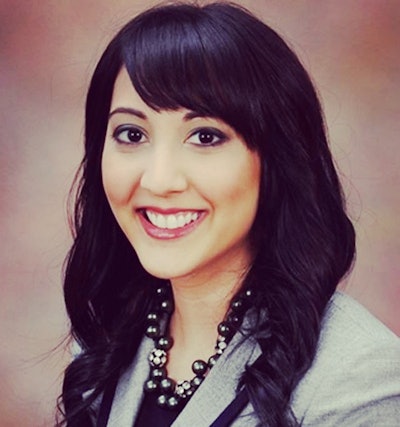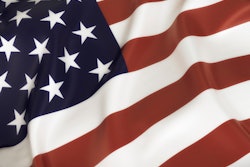
Radiologists are stepping up their political game. In fact, they've tripled their contributions since 2003, particularly to the specialty's political action committee, according to a May 19 presentation at the American College of Radiology (ACR) annual meeting in Washington, DC.
 Dr. Amy Patel from Beth Israel Deaconess Medical Center.
Dr. Amy Patel from Beth Israel Deaconess Medical Center.
The findings demonstrate that radiologists are not only increasing their active engagement with federal policy -- and the lawmakers who set it -- but also putting their profession first, Patel told AuntMinnie.com.
"RADPAC supports congressional candidates who are pro-radiology, and the fact that most contributions go to RADPAC shows that radiologists are putting their profession over their political party," she said.
Increasing influence
As the federal government's influence on healthcare policy and service has grown, so has the impact of election funding, Patel said. Through their professional societies, radiologists have sought to influence policy with political contributions. And although only about 10% of the roughly 34,000 radiologists in the U.S. contribute to medical political action committees -- a percentage that has held fairly steady over the years -- the amounts they contribute have increased, Patel told AuntMinnie.com.
"We still need to get over that 10% hump, but our results show that the radiologists who do contribute are giving more, dollar amount-wise," she said.
Patel and colleagues Drs. Patricia Balthazar, Andrew Rosenkrantz, Robert Mackey, C. Matthew Hawkins, and Richard Duszak Jr. investigated federal political contributions from U.S. radiologists between 2003 and 2016, using publicly available finance data from the U.S. Federal Election Commission (FEC). The group classified contributions by recipient group and political party and then analyzed the results by time frame, geography, and individual radiologist.
During the study time frame, the FEC reported a total of 35.4 million political contributions. Of these, 36,474 were from 7,515 individual radiologists. An average of 1,697 radiologists per year made political contributions (ranging from 933 in 2005 to 2,496 in 2016). Total annual radiologist contributions ranged from $480,565 in 2005 to $1.9 million in 2012.
Contributions to RADPAC grew dramatically during the study period, from $351,251 in 2003 to $1.1 million in 2016, Patel said. On average, contributing radiologists gave $2,163 annually to federal elections between 2003 and 2016; these amounts varied by state, ranging from $865 in Utah to $4,325 in Arkansas.
Of all radiologist federal election contributions during the time period, Patel and colleagues found the following:
- 76.3% were nonpartisan
- 14.8% were to Republicans
- 8.5% were to Democrats
- 0.4% were to others
- 74.6% were to political action committees; 92.5% of those were specifically to RADPAC
- 25.4% were to individual candidates
| Top 10 recipients of radiologists' federal political contributions, 2003-2016 | ||
| Recipient | Total contributions | Percentage of all contributions |
| RADPAC | $11,212,965 | 69% |
| Obama for America | $286,976 | 1.8% |
| Republican National Committee | $238,952 | 1.5% |
| Democratic National Committee | $149,284 | 0.9% |
| Romney for President | $138,070 | 0.8% |
| Obama Victory Fund 2012 | $136,081 | 0.8% |
| Bush-Cheney '04 | $110,328 | 0.7% |
| Hillary Victory Fund | $109,310 | 0.7% |
| ActBlue | $104,591 | 0.6% |
| Romney Victory | $87,091 | 0.5% |
Political boost
Medical specialties are fighting for their interests in an increasingly political healthcare environment, and radiologists must not be afraid to enter the fray, Patel said. Radiologists appear to be stepping up and boosting their political efforts -- at least with their wallets.
"Radiologist federal political contributions have increased dramatically in recent years, and this growth overwhelmingly represents contributions to RADPAC," she concluded. "Despite national political polarization, the overwhelming majority of radiologist federal political contributions are specialty-focused and nonpartisan."



















